Discover the Beauty of Ise’s Legendary Futami
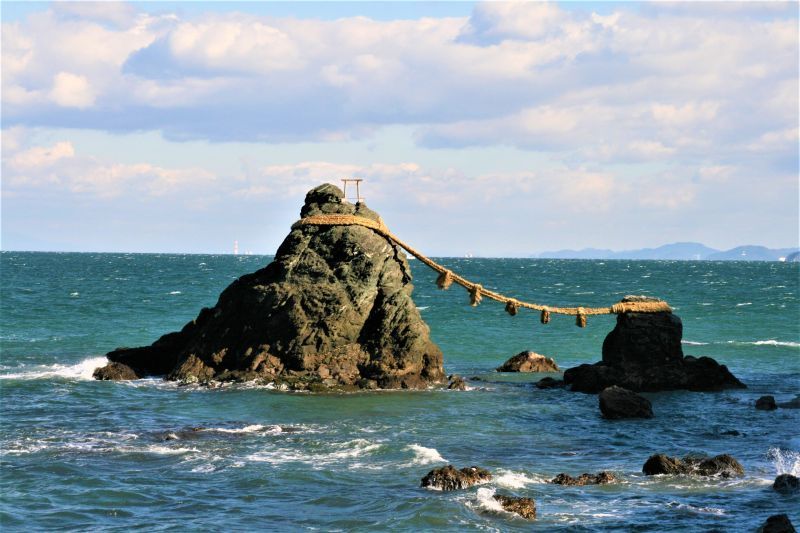
Along the southern coast of Ise Bay lies Futami, a spiritual corner of Ise City that is enveloped in Shinto myths and legends. For centuries, pilgrims have stopped at Futami Okitama Shrine here to purify themselves before visiting the venerated shrine of Ise Jingu. This, together with the natural beauty of its pine-laden craggy coast, has made Futami a thriving tourist destination for Japanese people. Read on to learn more about this fascinating area and what you can find here.
Written by Lisa Wallin
Futami Okitama Shrine
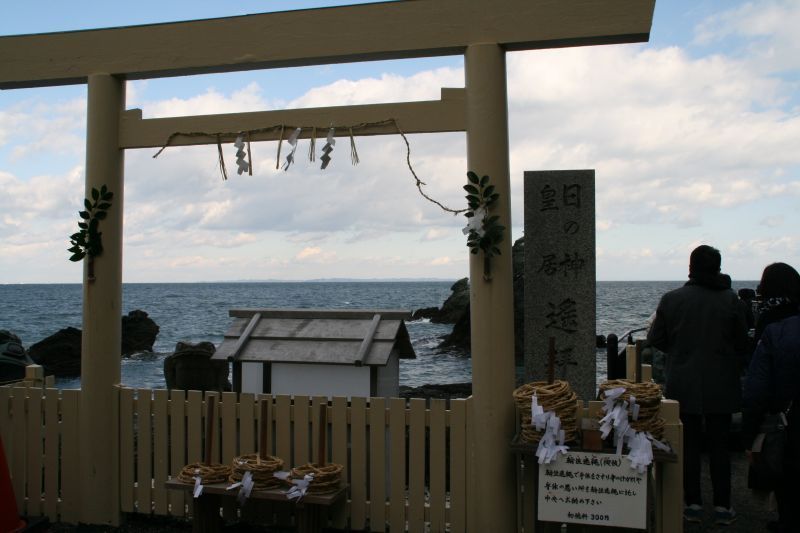
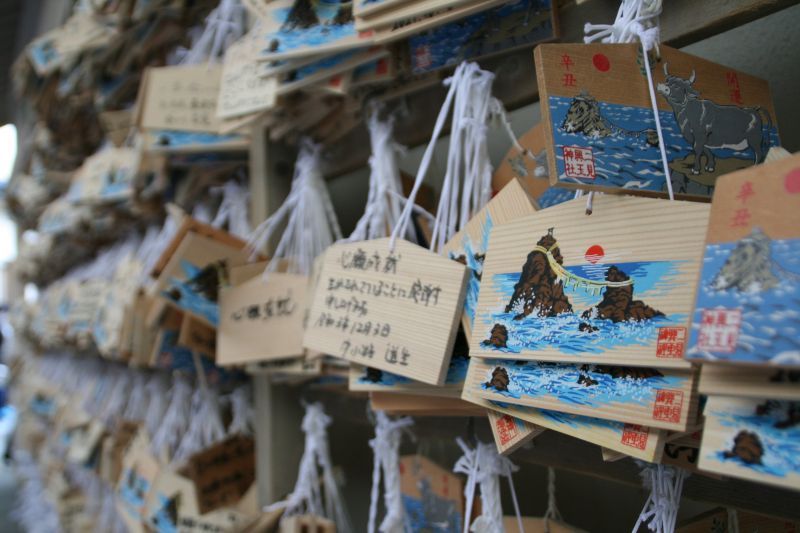
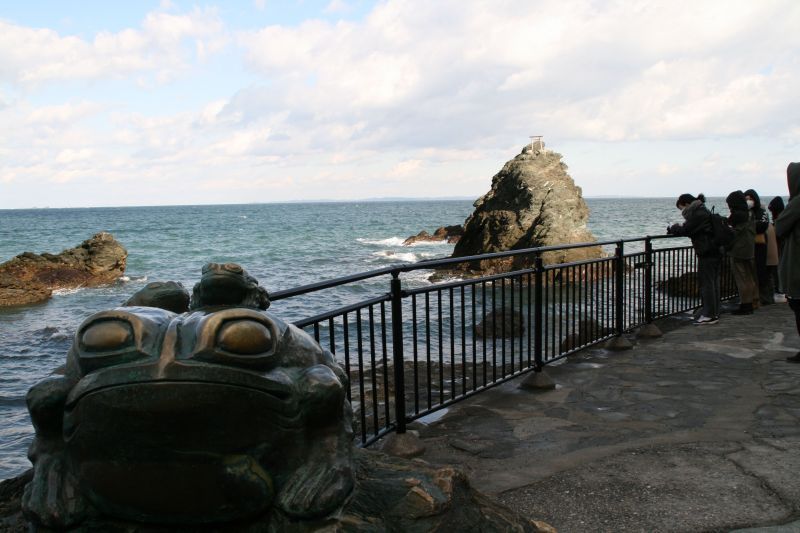
Futami Okitama Shrine is one of the representative spiritual places in Ise-Shima. The shrine sits on the craggy spot known as Tateishizaki, facing the rough seas of Ise Bay. It’s believed that the waves that crash against the rocks here originally come from Tokoyo no Kuni (the land of eternal life), and Tateishizaki is the first place where they reach the mortal world. Visitors to Futami Okitama Shrine will notice dozens of frog statues as they walk through the precincts. These represent messengers of the gods, who will help bring back lost items and people, and even fulfill certain wishes.
Meoto-iwa, Futami’s Famous Wedded Rocks
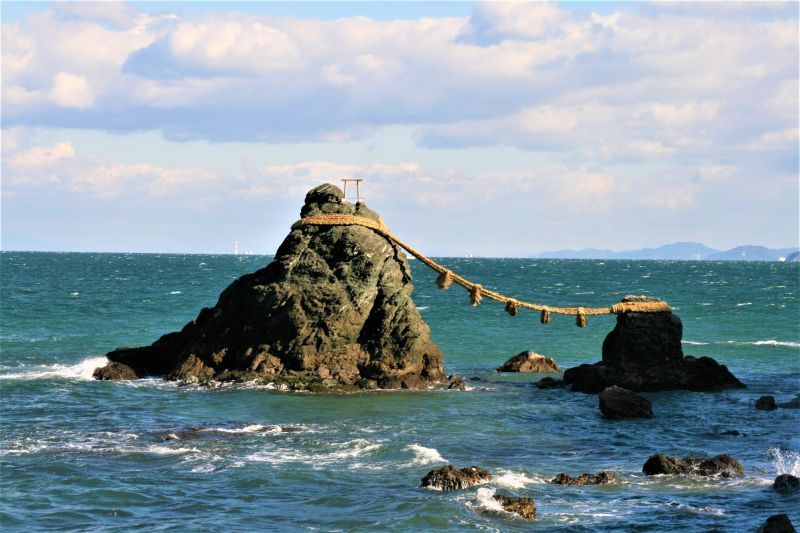
The Meoto-iwa, or “Wedded Rocks,” are one of Futami Okitama Shrine’s main draws. Because they stand close together, they are said to be a married couple and visitors who pray here may gain good luck in matchmaking or marital harmony. The Tate-iwa is nine meters high and is considered the “male” rock, while the four-meter-high Nejiri-iwa represents a woman, or feminine energy. A 35-meter-long stretch of shimenawa rope (the typical Shinto sacred rope) stretches between the rocks, connecting them together. It’s said that the rope serves as a gateway and a boundary between the heavens of the gods and the mortal world. The shimenawa rope is actually made of five separate ropes weighing a total of 40 kg — they are tied together during a special ceremony that takes place at Futami Okitama Shrine at regular intervals.
The Changing of the Meoto-iwa Shimenawa Ropes Ceremony
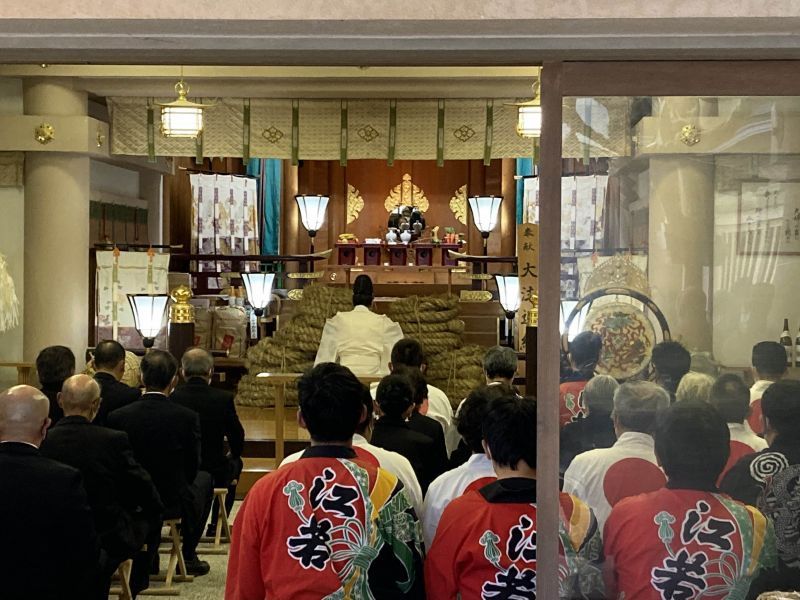
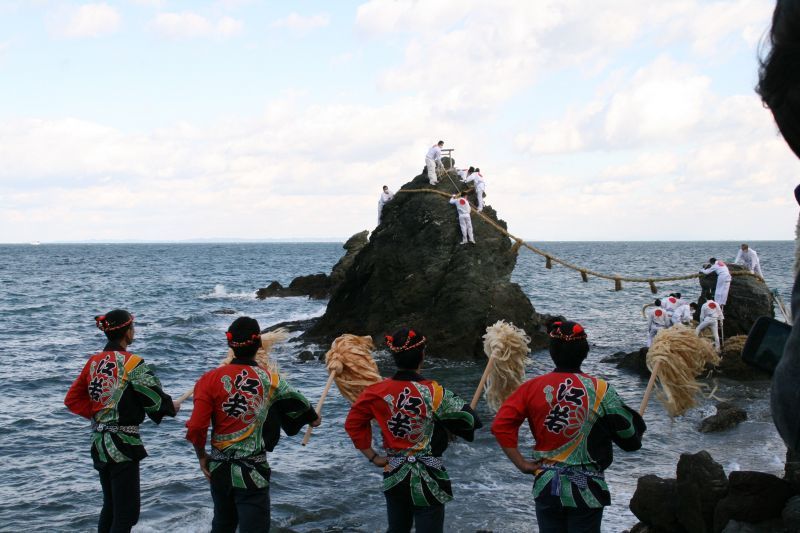
The sacred shimenawa ropes connecting the Meoto-iwa are changed three times a year, making it relatively easy for visitors to witness this unique ceremony. On May 5, September 5, and in early December (the exact date is dependent on the tide), about a dozen men gather to perform this Shinto ceremony. First, the old ropes are removed. This is followed by a Shinto ceremony inside the shrine, consecrating the ropes and the participants in preparation for their task. The men then carry the heavy ropes out to the rocks in pairs, and begin the arduous task of wrapping the ropes around both the Tate-iwa and Nejiri-iwa rocks as the waves crash around them. During this Shinto ceremony, groups of men sing and chant, blessing and encouraging them. Once everything is in place, the men anoint the rocks by pouring bottles of sake over both rocks. It’s a fascinating process and gives remarkable insight into Ise’s ancient Shinto traditions.
Hinjitsukan, A Symbol of Architectural History
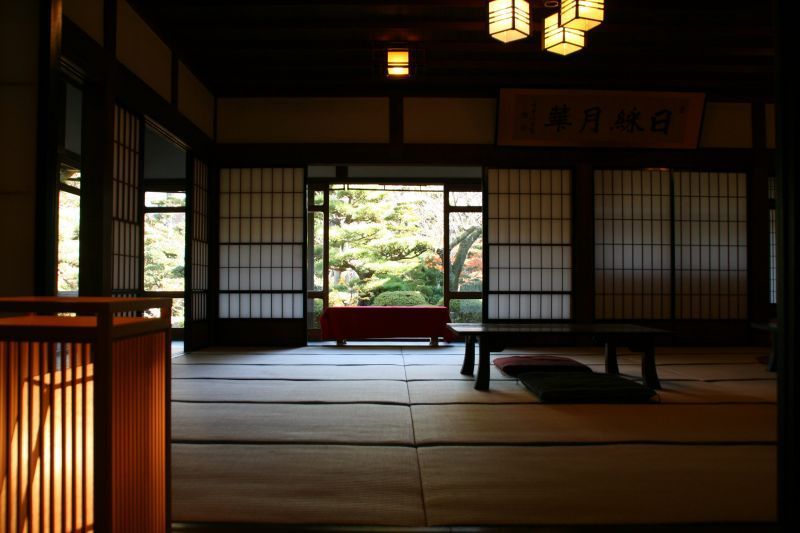
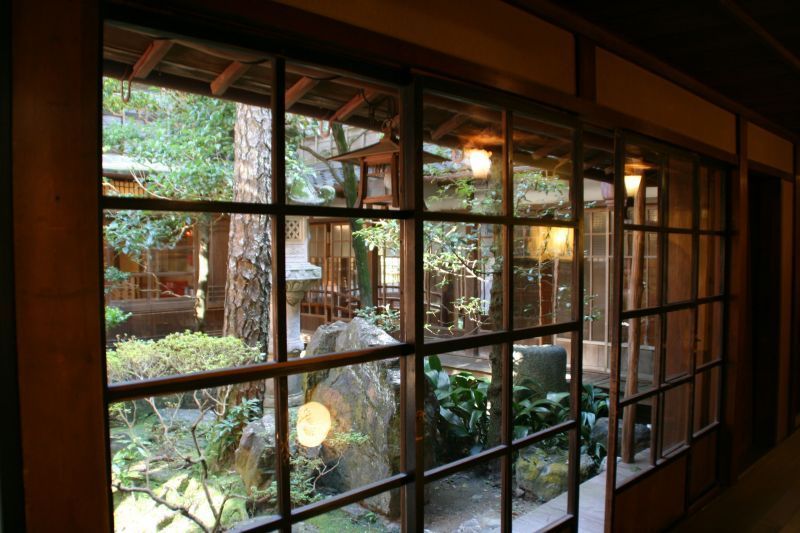
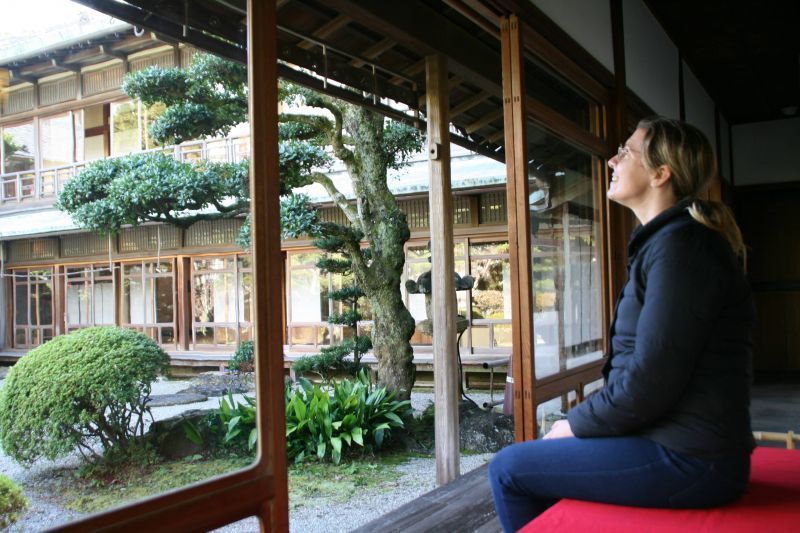
Hinjitsukan is a nationally designated important cultural property that was built in 1887. Since then, it has undergone several expansions and is an extraordinary example of Meiji (1868-1912), Taisho (1912-1926), and Showa (1926-1989) period architectural design. Hinjitsukan was once an elite inn reserved for imperial family members and the rich when they visited the area to pay their respect at Ise-Jingu Shrine or enjoy some leisure time. Now it serves as an architectural and historical museum, showcasing refined craftsmanship and local historical events. A walk around this impressive structure will reveal charming retro signs and meticulously designed rooms, as well as manicured Japanese gardens — one in the central courtyard and one facing the front of the building.
Isuzu Seigoan’s Delicious Futamiura Iwato no Shio Yokan
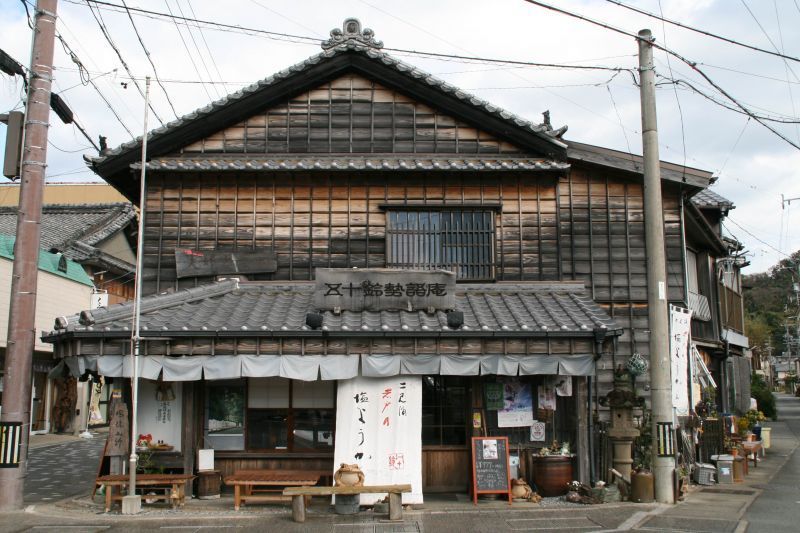
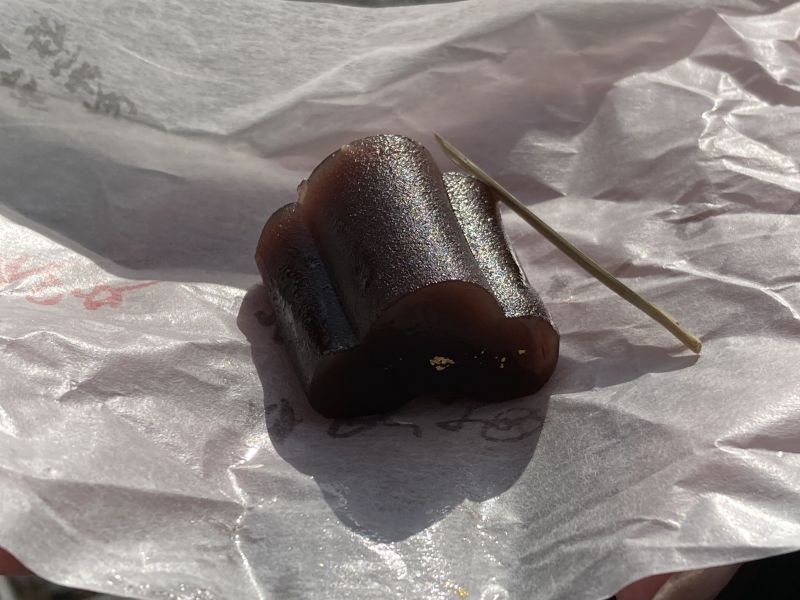
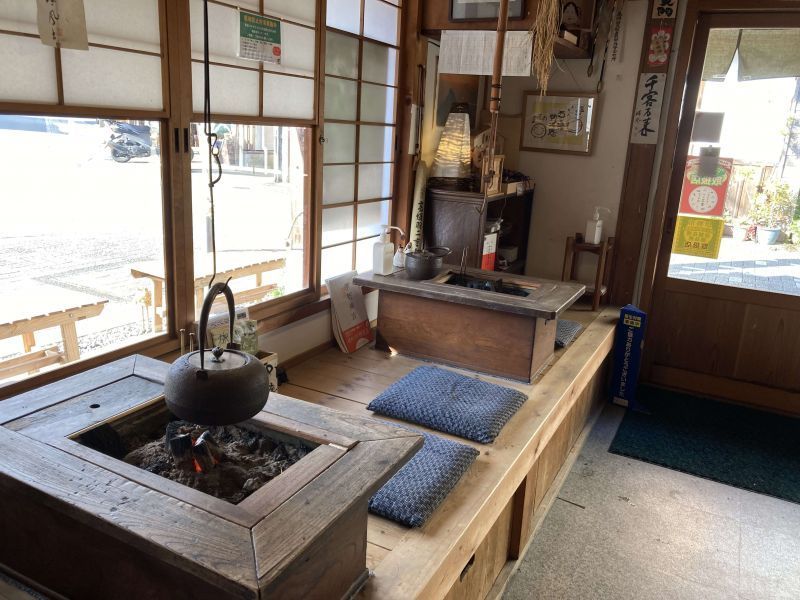
Isuzu Seigoan has been situated on the main approach to Futami Okitama Shrine since 1926. First starting as a souvenir shop, the owners switched to making Japanese sweets later. They now specialize in Futamiura Iwato no Shio Yokan, a melt-in-the-mouth treat using locally sourced salt taken from the Futami-Kamizen coast. Iwato salt has a surprisingly mild and almost sweet flavor, making it a perfect balance for these carefully hand kneaded treats. The few carefully selected ingredients — Hokkaido adzuki beans, starch syrup, agar, Iwato salt and water — make this a superbly delicious treat.
Isuzu Seigoan’s interior is decorated with antique items, including miniature irori-style hearths, complete with suspended teapots. It’s a cozy place to take an afternoon tea break after your visit to Futami Okitama Shrine.
Isuzu Seigoan’s interior is decorated with antique items, including miniature irori-style hearths, complete with suspended teapots. It’s a cozy place to take an afternoon tea break after your visit to Futami Okitama Shrine.
Mochi Treats at Ofuku Mochi Honke Futami Honten
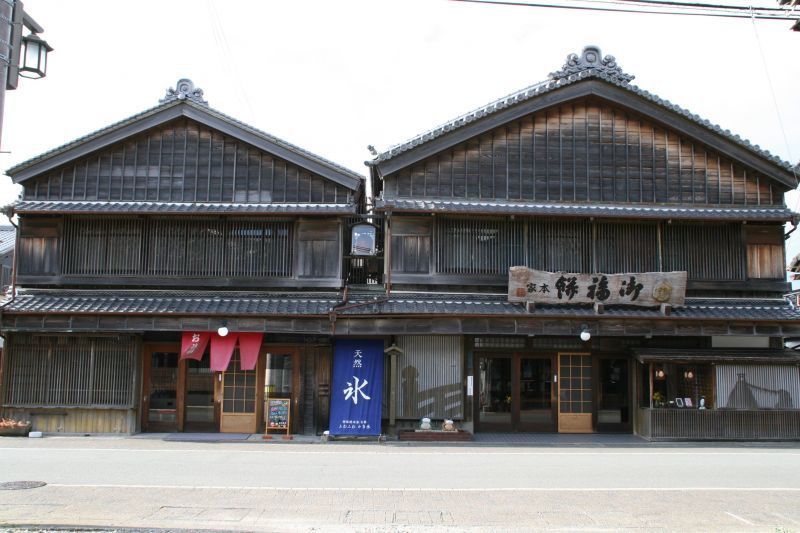
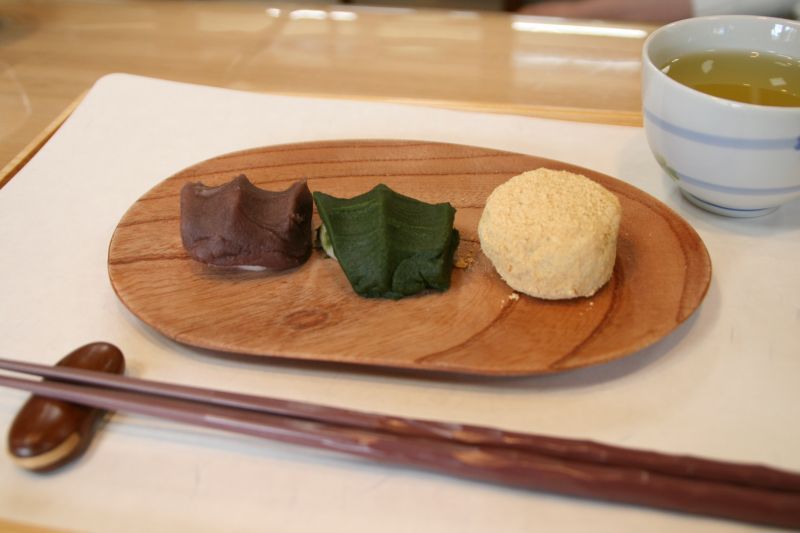
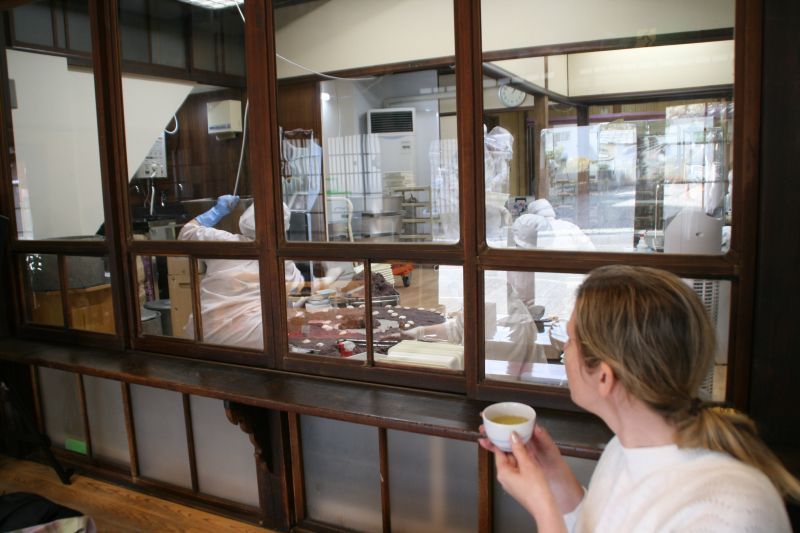
The sweets are shaped into small peaks that represent the waves of the nearby coast. Using adzuki beans and mochi rice from Hokkaido, this simple recipe is enhanced by the skilled craftsmanship of the artisans making it. Visitors to the shop can watch artisans methodically shaping Ofuku mochi one by one, working in a rhythmic motion that is absorbing to watch. Guests can take Ofuku mochi to go, or eat in the store. For a more substantial meal, Ofuku Mochi Honke Futami Honten also serves Ise udon and delectable shaved ice topped with a sauce made from seasonal fruits.